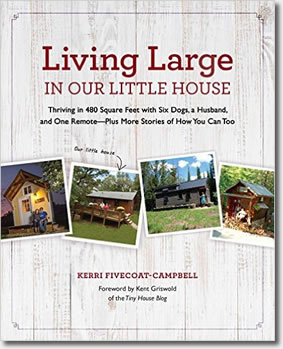Strange Nature at Our Little House
I read this summer about the momma Grizzly bear close to Yellowstone that attacked some campers while they slept. One person was killed and the bear was later hunted and killed. Her two cubs were taken to a zoo. It was determined the bears were starving and evidently, became desperate.
This article, by the Associated Press, warns hikers, berry pickers and campers to expect more of the same as bears come down from the mountains in search of food.
The reason, according to this article, is a beetle that is surviving warmer winters and killing the trees that produce white bark pine cones and their nuts, a staple in a Grizzly bear’s diet.
We have black bears here, but at Our Little House and in the Ozarks Region, we’ve also started noticing strange behavior in nature this year.
Honeybees, whose numbers have been in decline in recent years, are swarming the hummingbird feeders in search of food. My aunt, who has kept hummingbird feeders since they moved here full time in 1999, says this is the first year she’s ever saw bees swarming the feeders. She now keeps a separate plate full of her homemade nectar for them so the birds can also eat before their journey south.
My mother in law called last week to ask if I knew if raccoons and possums attack cats.
They live at the Lake of the Ozarks, about 3 hours north of Our Little House. They have two previously feral cats she’s domesticated enough so they will stay around outside.
She said she heard a racket on her deck in the middle of the night and got up and a “bunch of raccoons and possums had my cats cornered on the table.” She swears she doesn’t keep food down, she feeds the cats and picks up and washes their bowls each time (and knowing her obsession for cleanliness, I believe that). I read on the Internet that raccoons will sometimes attack cats, especially if they’re hungry, but raccoons and possums uniting into a gang? Strange.
And, there is of course, whatever happened to Emma. Again, my aunt has lived here for 11 years with nothing ever bothering her big dogs in her yard, a quarter mile from Our Little House. We built here in 2003 and while I felt more comfortable having the dogs in at night, there were nights they just wanted to bark at my aunt’s dogs and sleep on the covered front porch or the party deck. I felt reasonably confident that nothing would bother them at the house.
I was also assured by our Department of Wildlife that neither bears nor big cats eat dogs, much less would not “normally” risk coming into an area where there were 5 big dogs within a quarter mile radius. As horrible as it is for us to think about, the locals debunk pretty much anything the Department of Wildlife says.
What do you think? Is this abnormal behavior in the wild a product of global warming? Have you noticed strange behavior in the wild this year?










Here in Washington State we have noticed that the California gray squirrels are moving in. Our regular squirrels are reddish brown and pretty small. The new ones are gray and almost twice as big. I know that they are prolific breeders and I remember that several years when I lived in California they actually had to quarantine an Army base because the squirrels there were carrying the plague.
We have both kinds of squirrels here, the larger gray ones and the smaller red ones. There was a campground in California closed this summer when a squirrel tested positive for the plague.
In our part of the PNW we’ve had a good year for bees, Bears, Coyotes and Moose. Seems like there is more Whitetails around than Mule Deer – the last two years we had a cat on our property that killed at least three Mule deer. Didn’t see many Bambi’s this year as usual. Only one Doe with two.
The previous owner of our property had a colt killed by a cougar. Just over the hill from us they are having problems with Cougars and the newly established Wolves killing cattle and sheep.
Hummingbird feeders are a bad idea in Bear country, they are amazingly agile and have an uncanny ability to figuring out how to get them down. Bears are lazy and seek the easiest food source available – I’ve watched them eat reclined in a patch of berrys, take a nap and then resume eating upon awakening. Very entertaining. If your BBQ, garbage or bird feeder gets left out you are inviting Bears. A fed Bear = A Dead Bear sadly.
Thanks, Mo. I never thought about the hummingbird feeders possibly attracting bears. Definitely something to think about, especially when 6 bears were recently killed in Colorado for breaking into homes. I wouldn’t want to do anything to attract bears as I know wildlife that becomes accustomed to humans will be killed.
Reading this post just made me nervous thinking about the vulnerability of pets! We live in so Cal in a pretty developed area, but the coyotes come down from the nearby hills and travel up along the water channel. Animals left outside are not safe.
It seems there are more reports of coyotes everywhere. We’ve never allowed our Doxie and Doxie mix out without a leash.
All seems fine here in the south in my area. Granted I live in a suburb but I havent noticed anything really. We do have Carpentor Bees and I havent seen them much this year, but I have seen more wasps and hornets. But I figure its because I planted my elephant ears in pots on the deck then farthar out in the yard. That theyre drawn to the deck plants. My squirrals and birds seem normal. I used to put out hummingbird feed but only got ants no hummingbirds. I will try that for bees.
Thanks for the report, Brandy. Many of my friends in the burbs aren’t seeing any changes either.
I so enjoy your blog and am so sad for you over the loss of Emma.
I have a friend in the mountains outside of Eureka, Nevada whose Great Pyrenees dog was killed by a mountain lion pair. They ate part and semi-buried the rest. Wonder where department of wildlife gets its information?
As we push further into their territory, depriving them of habitat, they will push back and kill and eat our pets.
I live in a semi-rural area in Northern Nevada and we have destroyed thousands and thousands of acres of coyote habitat and then get upset when they eat our pets.
Sadly, I doubt we will learn any lessons in time to prevent our own extinction.
I’m afraid you’re right, Constance, about our lagging in lesson learning.
Horrible. I’ve been looking into what flowers to plant to feed bees year round. No bears in NZ though.
I’ve heard lavender is good for bees, but I’m no expert.
Distressing to notice these differences, mentioned also in comments, and not know what is causing them. I also heard about rain in the midwest having been affected by the dispersant chemicals, and why not? We have acid rain here on Cape Cod. I am not a conspiracy theorist either, but something is definitely amuck. I hope you will follow up on this post. Thanks for writing about it. I wonder if the honeybees swarming the hummingbird feeders has anything to do with their trying to avoid genetically-modified crops, more and more pervasive? Will have to ask my friend the beekeeper what she thinks.
Why are Honeybees finding food sources other than from just flowers? Being a beekeeper for over a decade i’ve been noticing them shift & change due to our behaviors. Honeybees have been on Earth since vegetation arrived and it isn’t until now that their existence is threatened. Why? The use of chemicals and toxins in our daily lives have now reached the environment in so many places it is weakening anything living: water, air, plants, soil.
I agree with Sandy – honeybees will not eat plants that are genetically modified when given other potions. In science labs they opt to die before consuming from a GMO flower.
Beekeepers feed their bees sugar water, much like what you are feeding your hummingbirds I bet. A ratio of 1:1 is best. Please feel free to continue to feed them, obviously they need it or they wouldn’t reach for it.
Remember without honeybees there won’t be enough food on the planet. No Honeybees = No Food. They are the most aggressive pollinators on earth. We can not survive without them.
Keep up the good work observing nature and spreading the word. It is my greatest contribution to my humankind as well.
All the Best.
Thank you, Laura.
Thanks, Alexandra, for your comments. Please feel free to report back your friend’s thoughts.
It’s pretty common knowledge around here in Oklahoma that “coons” will attack cats. I’ve heard that for many years. We have coons in town also and have for many yrs. We also have armadillos in town. I live in a small town and had a cat that disappeared along with the neighbor’s cat about a year and a half ago. Animal control said they have encountered coyotes just a few blks from my house…I live right in the middle of town.
I lived in a larger town here in OK a few yrs ago and had moved into a rent house…where there were a family of coons living under the deck in the backyard. It was right in the middle of town. I didn’t know it until I saw one looking in the glass door one evening. They would also come into the garage and get the cat food. Maybe it’s easier to get the cat food that’s out??
Yes, Debbie. We were advised when we first moved here to get metal garbage cans with tight fitting lids so as not to attract wildlife. I’ve been reading about coyotes becoming more and more skilled in lurking in neighborhoods, mainly due to encroachment on their habitat. I even wrote a story about a coyote that attacked a little dog in the middle of a subdivision. We felt pretty well insulated and safe here, given wildlife still have literally thousands of acres around us to roam, but no more.
In the West where I live, the pine bark beetles are really wreaking havoc; whole mountainsides are this horrible reddish brown. This month’s Outside magazine has a fabulous article that explains in depth what’s happened with the beetles and why it’s such a huge threat – really scary. Poor bears!!
I know, Melanie. It is horrible, and I just read another story today about a mamma bear and two cubs that broke into a house looking for food. This was in Colorado and this time, all were killed by the Dept. of Wildlife. We are going to have to find better ways to deal with wildlife and live in harmony with them, especially when we move into their territories.
There are definitely weird things here too. We used to have a terrible time keeping bees out of the pool now there are none. There used to be tons of frogs along the bike path we walk, now there are none. The deer ate weird things in our yard this winter – things they have never touched before. And the lake where my parents have a house seems to suddenly have no fish, when in past years we would always catch things.
We have also only seen one tarantula this year. While that might seem like a good thing to many, these critters have a place in the eco-system here.
My vegetable plants shrivelled up and died because there were no bees to pollinate them. We’ve always had ‘possums in our backyard that terrify my beagle and we live quite close to the city.
That reminds me of when we would go up to land we leased for our horses in the city. Emma would chase the possums until they “played possum,” only then would she lose interest. She was so sweet natured, she loved the chase, but wouldn’t have hurt anything (Sade is the hunter).
Yes, Rhonda, even here at my little hole in the wall trailer park.
I have had problems with raccoons in the past, and we are now having problems with them again, one problems is the idiots that live around me will not pick up their garbage, and put it in the trash, so it brings them in. They are very aggressive though as I was contronted by one last year.
Even the little squirrels are aggressive, last year, I was going to the storage unit that we keeps some things at, and a squirrel was in the middle of the street running in circles and when I drove by slowly, it attacked my front tire on my car. I am sure that it had rabies, and even told the animal control, but they did not check it out nor did the wildlife management we have here, go figure.
My theory of this Rhonda, is a combination of global warming, and this year with the gusher in the gulf, the dispersant they sprayed. I did some reading and checking, and this spray had evaporated up into our area (Texas, OK, Kansas, Nebr. and the Dakota’s and damaged crops, but nothing has ever been mentioned in the main stream news. Also, Georgia has had strange problems with crop damage and they are sure it is from the dispersants. Call me a conspiracy nut, but… I have been trying to find info about animal behavior changes but I can’t. Also, Rhonda, I know several years ago, I read in a health magazine that I get about the changes in bear and critter behavior in Yellowstone park, this was at least 5+ yrs ago,and have been doing a study there and they are (and now have) noticing a change there. and then the momma bear and the cub incident a month ago. It was noted that something is killing the black bears and their bodies are literally shredded, and they noticed that there were no jackrabbits around either.
So, I am not sure where this is headed, Rhonda, I know also that you do hear of the critters that head into the cities, which is strange, expecially coyotes, as they used to shun man, but even the coyotes I see around our area, are not afraid of you or man himself.
Vicki, I’m not a conspiracy theorist myself, but even the company spraying the dispersant didn’t know what the long term effects would be or how far it could travel. If ash from a volcano can travel far and wide and blanket a continent in darkness, grounding planes, do we think the dispersant can’t travel just because we can’t see it?
I also forgot to add into my post that a week ago, we heard this yipping and realized it was a coyote chasing something. That isn’t unusual around here, but the closeness of it was, it was no more than 500 yards beyond our houses. It began close to my aunts and ended beyond the writer’s studio.
Kerri,
You may want to go and check on the Animal Planet web site. There was a video/article on the feral hogs and what problems they are having with them. I think I read or seen something on this that they were having human attacks from them also.
You may want to check this out. fyi.
Thanks. We’ve heard a wild hog, but have never seen one.
Here in Prince Edward Island, Canada, there have been a number of people saying that our seagull population is way down although I, myself, have not noticed that. We don’t have large carnivores here – until recently, foxes were the largest critters we had – but a few years ago coyotes came across the ice in the winter (a trek of about 10-12 km.) with the result that the foxes moved closer to town. We live in the country but we see a lot of foxes. In fact, the foxes are getting so habituated to humans that they are becoming quite tame which is not good for the foxes. We had almost no sea ice last winter so the seals were whelping on shore and the confused seal pups were on roads and in fields. The oldtimers had never seen anything like it.
I’ve seen documentaries on the seals and the lack of ice, Olivia. Thanks for weighing in with a first hand perspective.